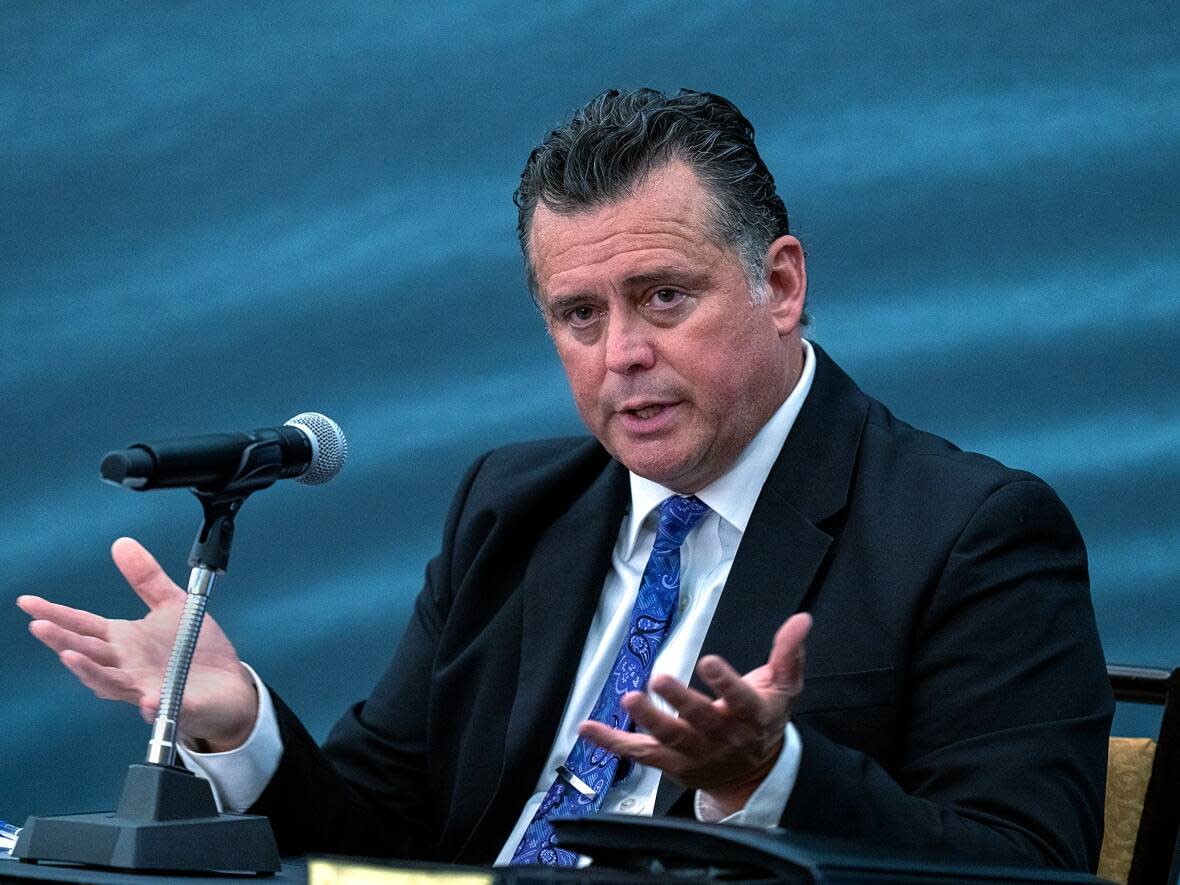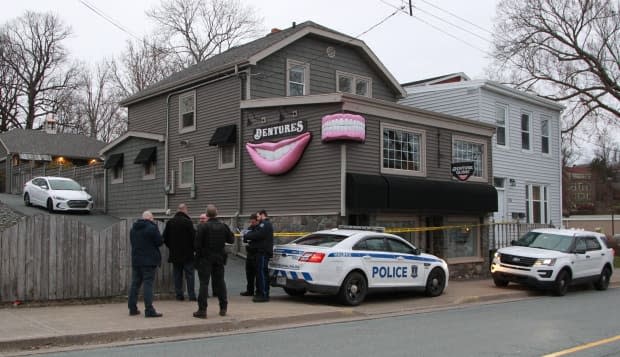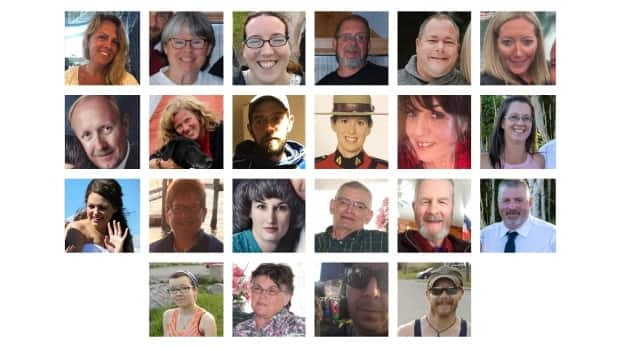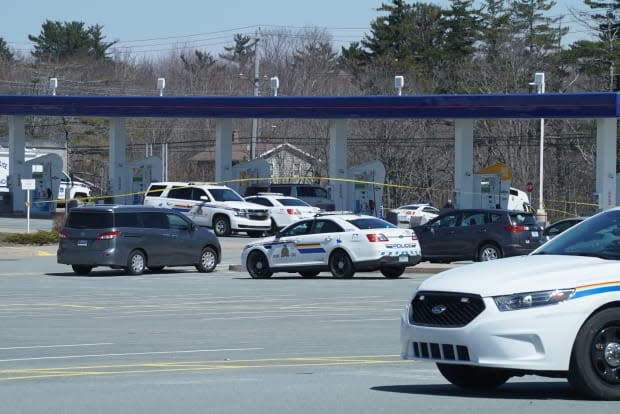Halifax police chief says it's 'inconceivable' they wouldn't have considered alert in mass shooting

The head of Halifax Regional Police says he knew the emergency alert system was a tool police could have used during the Nova Scotia mass shooting in 2020 — and if the gunman had gotten closer to the city it's "inconceivable" they wouldn't have considered using it.
Chief Dan Kinsella took the stand Thursday afternoon before the Mass Casualty Commission leading the inquiry into the April 2020 massacre where a gunman killed 22 people across the province.
The webcast of the proceedings can be seen here.
Commission counsel Rachel Young asked Kinsella to expand on the lengthy list of questions they had sent the Halifax police force last month, including the topic of the Alert Ready system.
When asked if Halifax police would have sent an alert about the gunman had he crossed over into their jurisdiction, Kinsella said the best time to be contemplating a public alert would have been "much earlier" in the 13-hour shooting.
"There was various points in time where I believe it could have been used," Kinsella said. "It's really inconceivable that we wouldn't have considered it."
Kinsella added that HRP would have still weighed the situation and the impact an alert would have on the public and officers, but it would have been an option "particularly had we gotten a call from EMO," he said.
At the time of the massacre, all Nova Scotia police agencies had to send a request for an alert and the accompanying text to the provincial Emergency Management Office.
The provincial EMO executive director, Paul Mason, has told the commission that one of their staff tried to speak with the Mounties the morning of April 19 to check if they wanted an alert sent out, but couldn't reach anyone. Eventually the staff member called an officer he knew and got through that way.
At 11:20 a.m. AT, RCMP called EMO to request use of the alert system, but Mason said they did not suggest any message. Shortly after, the gunman was killed.
Instead of requesting an alert, the RCMP tweeted late on April 18 about a firearms complaint in Portapique. They turned to Twitter again the next day around 8 a.m. AT to report that it was an active shooter incident. The RCMP did not release the fact that the gunman was driving a mock police car until 10:17 a.m. on April 19. An image of the vehicle was posted to Twitter.

Although an alert had never been used for policing in Nova Scotia before the shooting, Kinsella said he knew it could be used for active shooter situations.
Multiple RCMP staff and officers have said they had no idea the national Alert Ready system that is used for major weather events or Amber Alerts could also be used for policing.
Nova Scotians immediately began asking why the Mounties chose to release information on Twitter rather than using the alert system, which would have sent information to people's cellphones. Many have pointed out that internet service is spotty in central and northern Nova Scotia, and Twitter use is not widespread.
Family members of some of the nine people killed on April 19, 2020, have said their loved ones could have been saved had they known there was an active shooter driving a replica police cruiser on the loose.
Halifax Regional Police and RCMP have since been trained on the Alert Ready system and are now able to directly issue their own alerts.
The lawyer for the family of victim Gina Goulet, who was killed in her Shubenacadie home the morning of April 19, 2020 shortly before the gunman was shot by police, asked Kinsella why Halifax police officers couldn't have just gone out on their own to help the manhunt.

Kinsella said they were preparing what to do if the gunman crossed into their jurisdiction, but until then they had to wait for requests for help from RCMP who were in charge of the response.
"You can't just get in your car and your cruiser and drive into the scene — you could but it's not good police business to do that," Kinsella said.
The chief said that he personally offered help to Chief Supt. Janis Gray, who was the head of Halifax RCMP at the time, around 8 a.m. on April 19 but never heard back.
When Lenehan asked Kinsella about why the Halifax police's emergency response team (ERT) wasn't deployed closer to Truro, Kinsella again said he didn't get a request from RCMP.
"You can't just send them," Kinsella said.
But the leader for the Halifax Regional Police emergency response team, Charles Naugle, has told the commission he was frustrated to be denied extra members, and always assumed the force would face an active shooter "with everything that we had."
Halifax officer wanted more resources
In an interview last September, Naugle told the commission he wanted to bring in eight more emergency response team members around 9:30 a.m. on April 19 to bring their team full strength to more than 16 members "for the search and others to standby" — which was denied.
"Never in my life would I think that I would have to try to figure out how to get permission to call the resources out that are sitting down in the locker room," Naugle said.
Soon after, the gunman killed Lillian Campbell in Wentworth and Naugle said the ERT members he did have formed into teams and went out onto the roads with the instructions to stop the gunman from entering Halifax. Naugle said some members went to the Halifax airport and Fall River, while others were at the Enfield Big Stop when the gunman was killed.
Kinsella said Thursday he stood by the decision the duty officer would have made at the time, given how quickly things were unfolding, but it's always a good idea to look at what could be done better.
"Maybe there is some recommendations that come out of this that will say, based on this situation, we need a certain amount of tactical officers on duty at all times," Kinsella said.
Chief 'refused' to meet with commission until now
Kinsella had declined multiple requests from the commission to be interviewed and only testified after being subpoenaed, according to documents tabled Thursday.
An email from commission counsel Rachel Young to Halifax municipal lawyer Andrew Gough on July 13 said the fact that Kinsella and other senior HRP officers had declined to be interviewed by the commission "is a missed opportunity" to contribute to a conversation around public safety.
By that point, Young said the commission had tried to arrange an interview with Kinsella multiple times, but he cancelled in March and April due to scheduling issues and not getting questions ahead of time.
Young said that on June 7, a day after watching Truro police Chief David McNeil's testimony in person, Kinsella cancelled an interview scheduled for June 10. The commission had sent Kinsella questions earlier that month.
"No other chief has refused to meet with the commission," Young wrote, adding that although Kinsella said he'd supply written answers to some questions by July 13, he hadn't done so.
Young said in order to ensure a timely response, she was sending the written questions in the form of a subpoena with a seven-day turnaround time. Commissioner Michael MacDonald also issued a subpoena for Kinsella to appear Thursday for oral testimony.
Kinsella did then respond to the 86 questions the commission sent with Young's email, as well as to a series of followup questions.
Tension between RCMP, Halifax police
Co-ordination between RCMP and municipal police forces during the mass shooting has been a point of contention during the inquiry.
The commission has heard Halifax Regional Police played various roles in the mass shooting response the night of April 18 and 19, 2020, including monitoring the gunman's Dartmouth denturist clinic and apartment. They also brought family members of the gunman's spouse, Lisa Banfield, to a safe location early in the morning on April 19, and shared photos of his mock RCMP cruiser to RCMP shortly after 7:15 a.m. that day.
In an internal Halifax Regional Police email from April 29, 2020, Staff Sgt. Donald Steinburg said there were 18 officers on duty in the integrated criminal intelligence division alone as of 6:45 a.m. AT the Sunday of the mass shooting.
The RCMP asked for the division to team up with the Halifax Regional Police emergency response team to gather up Banfield's family members. The emergency team members were also eventually sent to the Irving Big Stop in Enfield, where the gunman was shot and killed.

Steinburg also said the province's Serious Incident Response Team (SIRT) asked for HRP investigators and the forensic identification section to handle the Big Stop scene following the gunman's death. The identification members were eventually redirected to other crime scenes, Steinburg said.
By midday April 19, Steinburg said Halifax police had approximately 50 officers assisting with various tasks.
In a redacted wellness report of 24 N.S. RCMP commissioned officers or civilian equivalents finished in September 2021, many said there was an ongoing "turf battle" over operational control and funding between the Halifax Regional Police and the Nova Scotia RCMP.
Several participants also reported that despite the Mounties doing their best to be a "partner" in this integrated model, "the leadership of HRP was doing everything it could to undermine and break the relationship with the RCMP in order to access more resources from (Halifax Regional Municipality) and the province."
On Monday, Lee Bergerman, the retired commanding RCMP officer for the province, was asked at the inquiry if organizational issues between the RCMP and municipal police affected the police response to the mass shooting. She said no, but that in the aftermath of the tragedy, "it was apparent that it became popular to distance yourself from the RCMP because we're receiving a lot of criticism publicly."
Bergerman said that she believes the RCMP's push to establish province wide policing standards "has caused a rift between the RCMP, the Department of Justice and municipal policing agencies."
She added that municipal chiefs were also upset by the RCMP's move to start tracking expenses every time RCMP special units have to be called in by outside forces. But Bergerman said the RCMP hasn't been billing municipalities for those services, just keeping track to show the province where their money is going when they run a deficit.
MORE TOP STORIES


